It’s no surprise at this point that since we were in Boston, we took a tour of the Massachusetts State House. For those keeping track, this is our twentieth state capitol tour, all of which Doug is ranking here.
The red-brick building was completed in 1798 for what seems like a very low sum – $133,333 – but which was actually five times the official budget.
It is considered to be a masterpiece of Federal architecture, and regarded as one of architect Charles Bulfinch’s finest works. (Bullfinch was a renowned architect who has a long list of impressive credits to his name, including the Maine and Connecticut State Houses.)
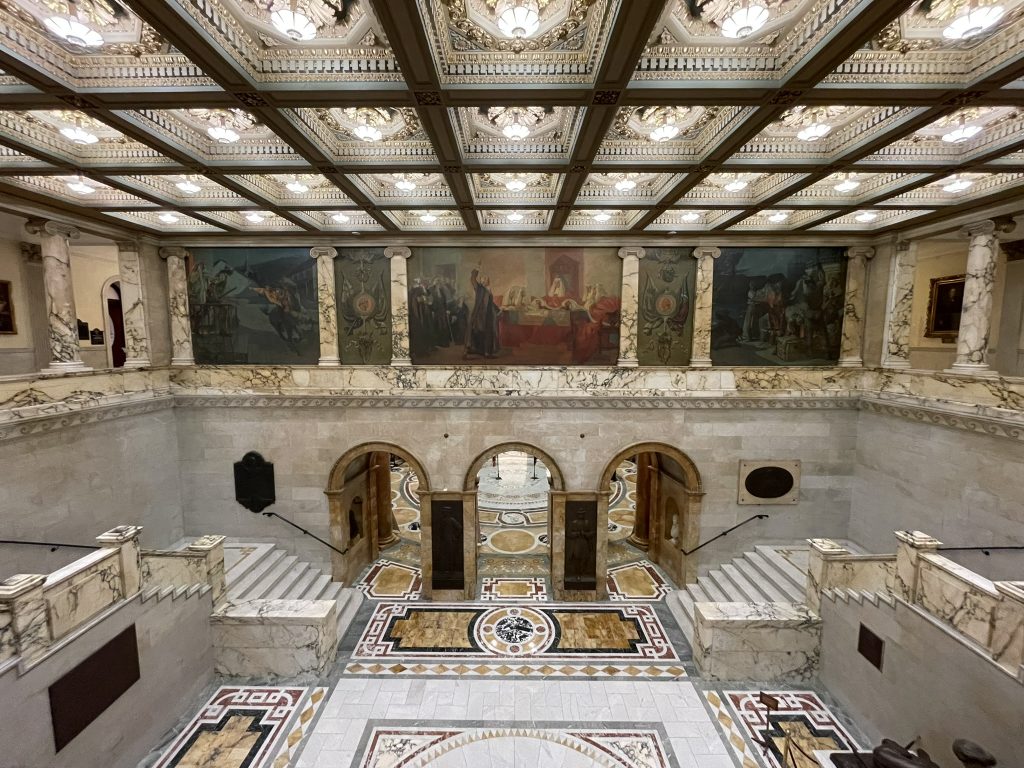
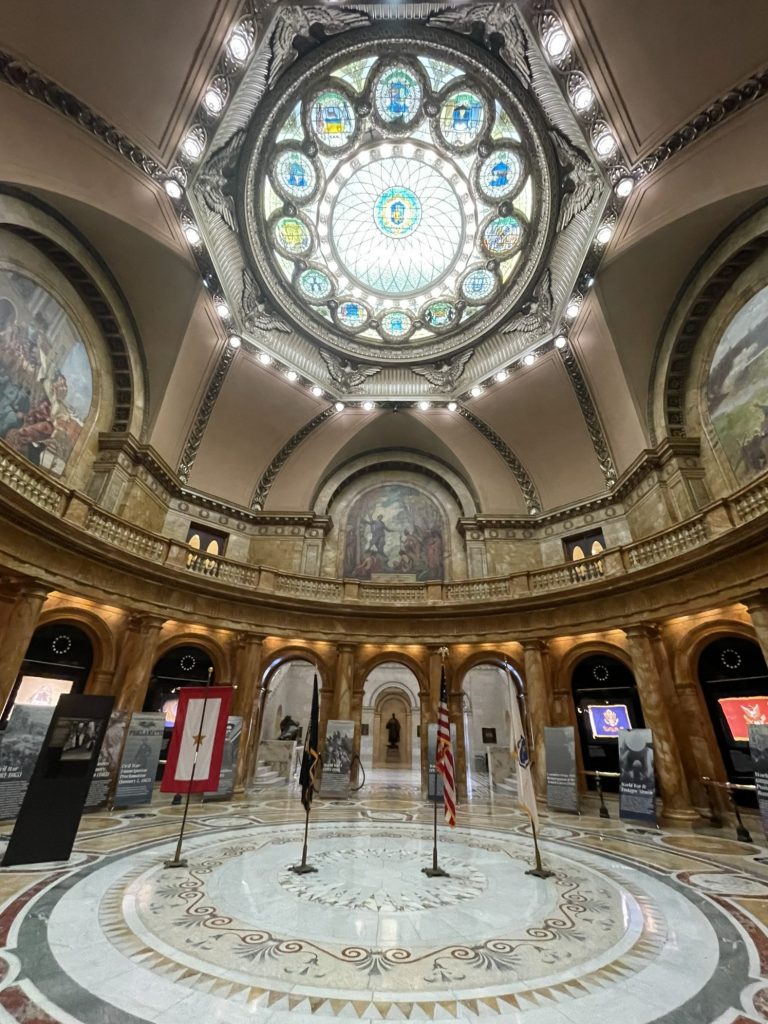
The building sits atop Beacon Hill, and when the Mason cornerstone ceremony took place in 1795, it was presided over by none other than Paul Revere, the Grand Master of the Grand Lodge of Massachusetts at the time. Samuel Adams and Paul Revere placed a time capsule inside the cornerstone, which was not rediscovered until 2014. It contained coins, newspaper clippings, and other historical artifacts.
The original dome was made of wood, which leaked, so it was covered in 1802 by Revere Copper Company (yes, that Revere). It was originally painted light gray, but in 1874 it was gilded with gold leaf. However, during World War II, it was painted gray once again, to prevent reflection during blackouts. It was not regilded until 1969, at which time it cost $36,000; three decades later the regilding cost had risen to $1.5 million. The dome is topped with a gilded wooden pine cone, which symbolizes the importance of Boston’s lumber industry during colonial times.
A major expansion of the original building took place in 1895, followed by another major expansion in 1917. The original building was actually quite small compared to its current size.
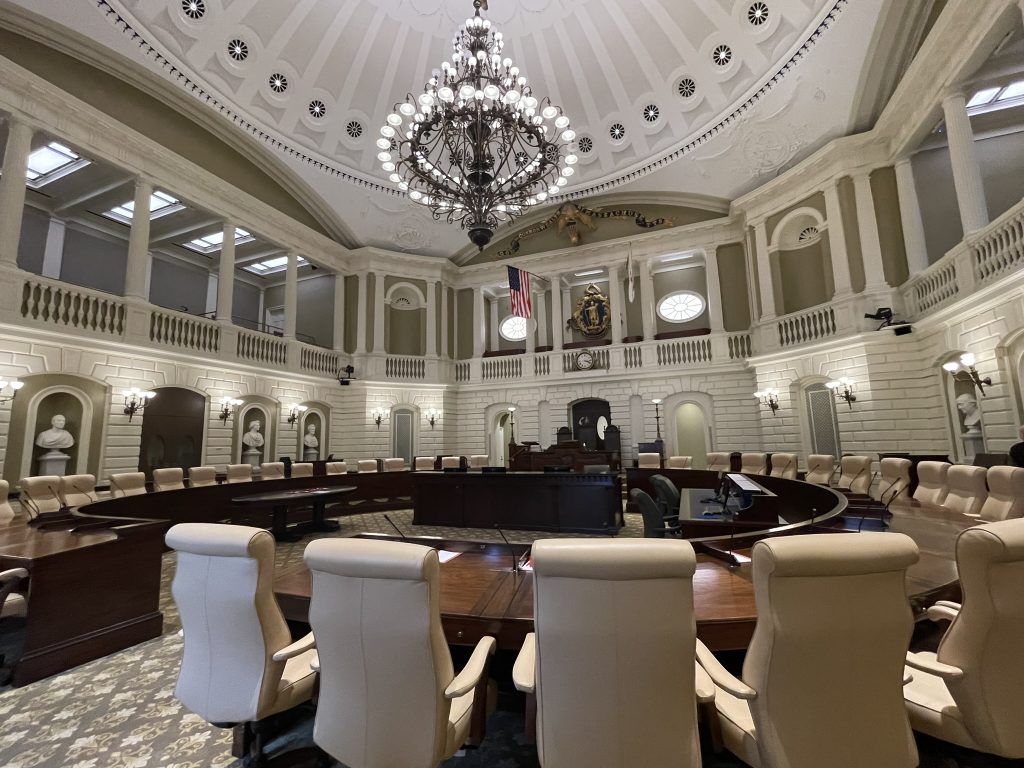
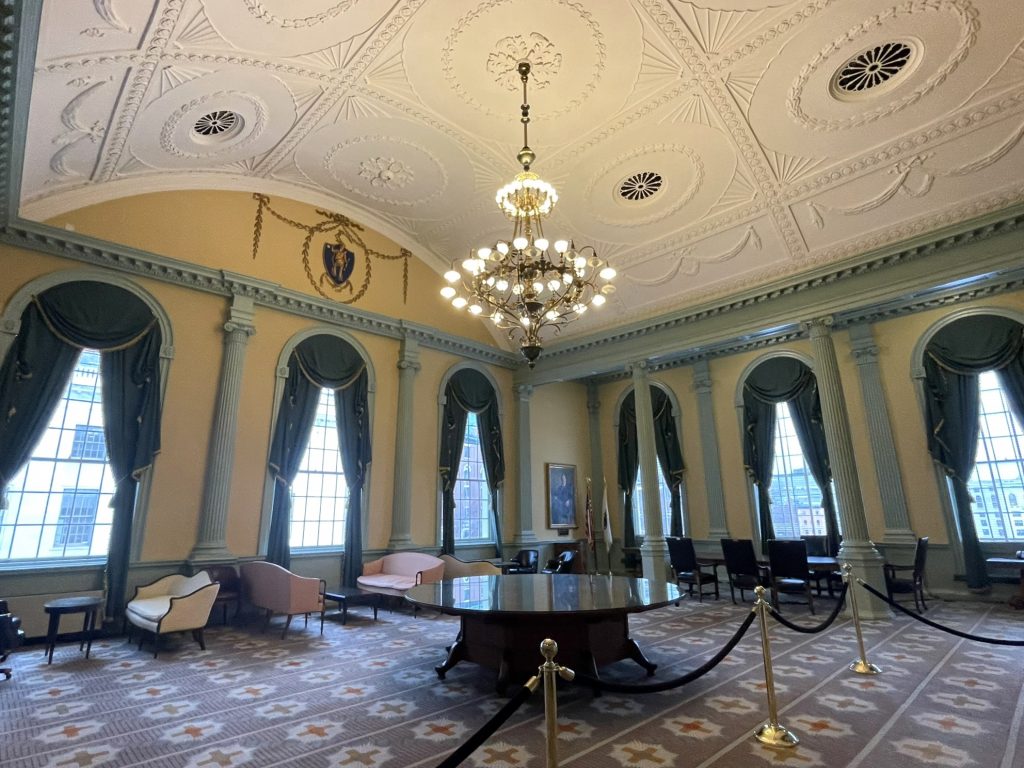
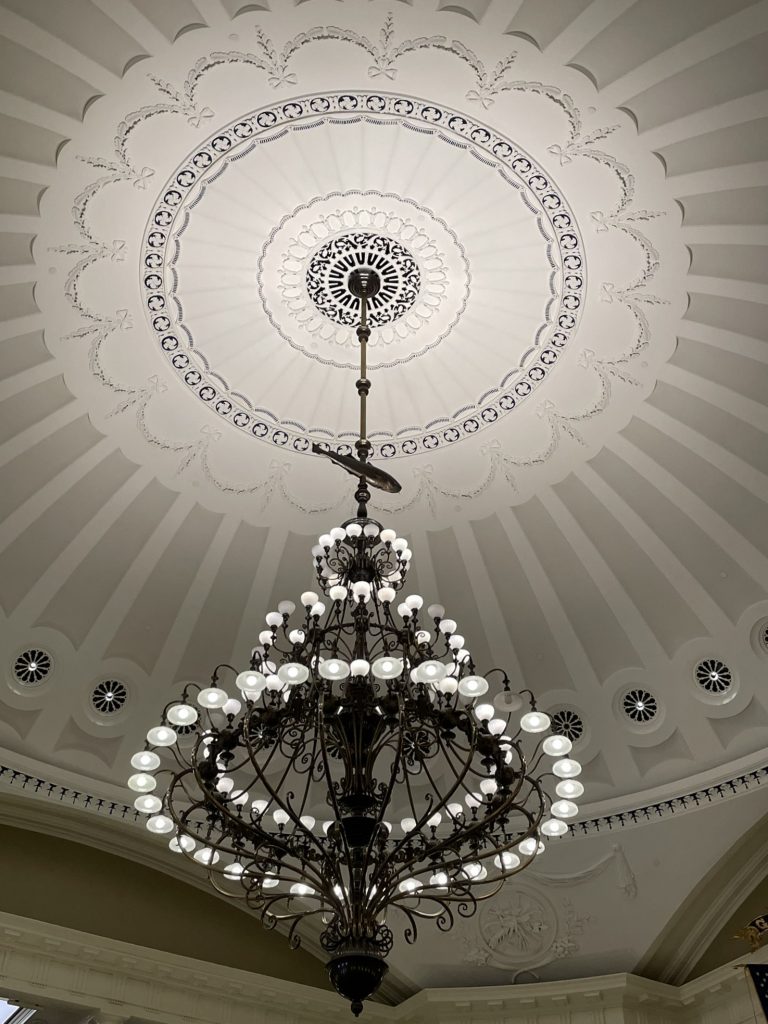
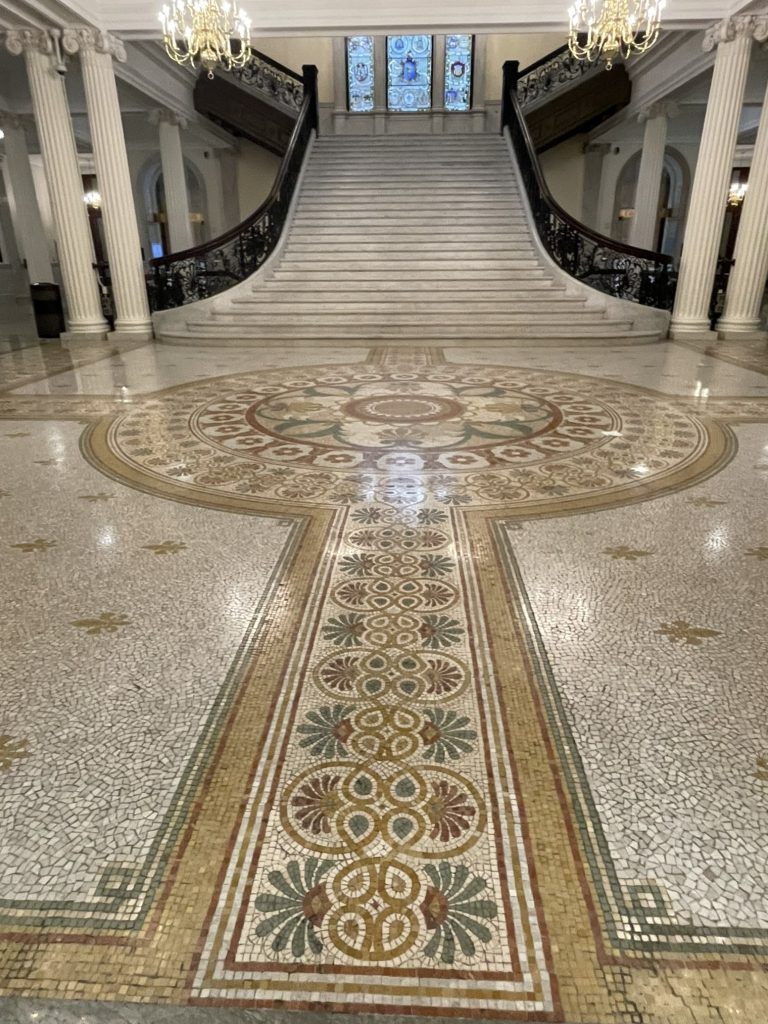
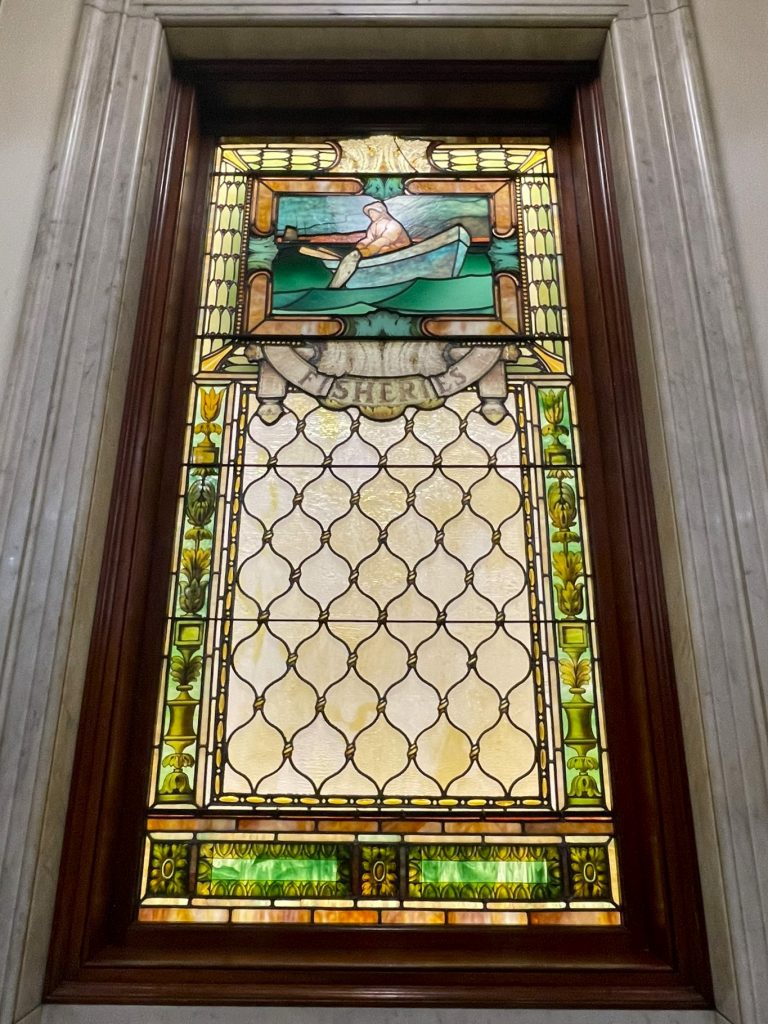
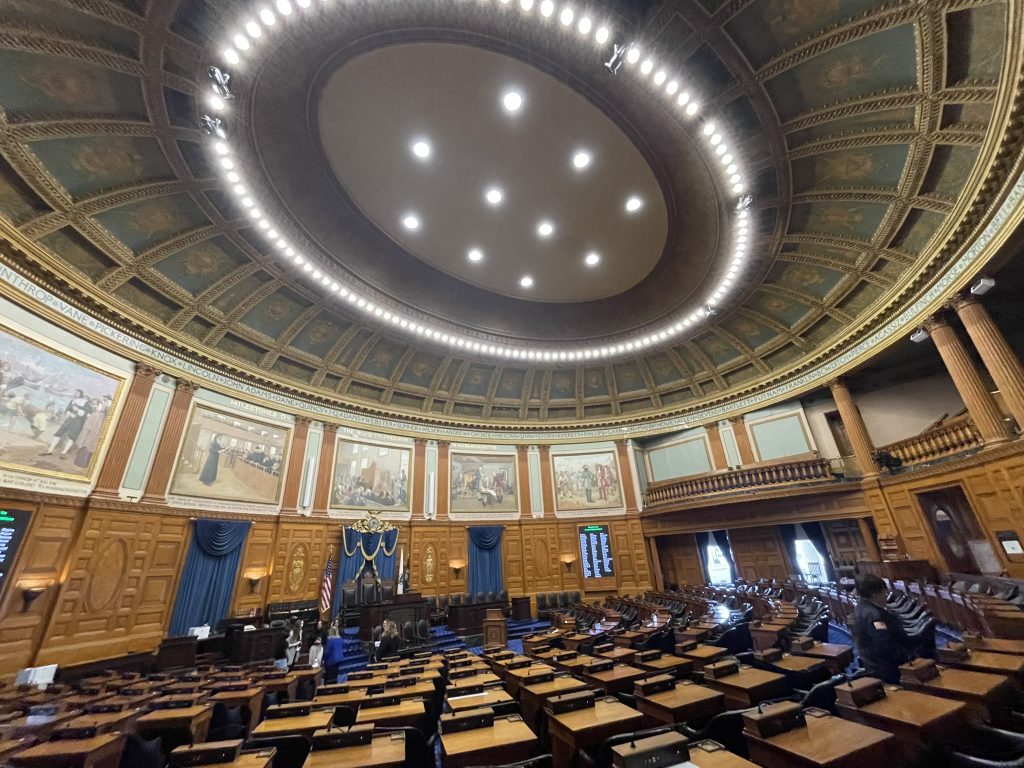
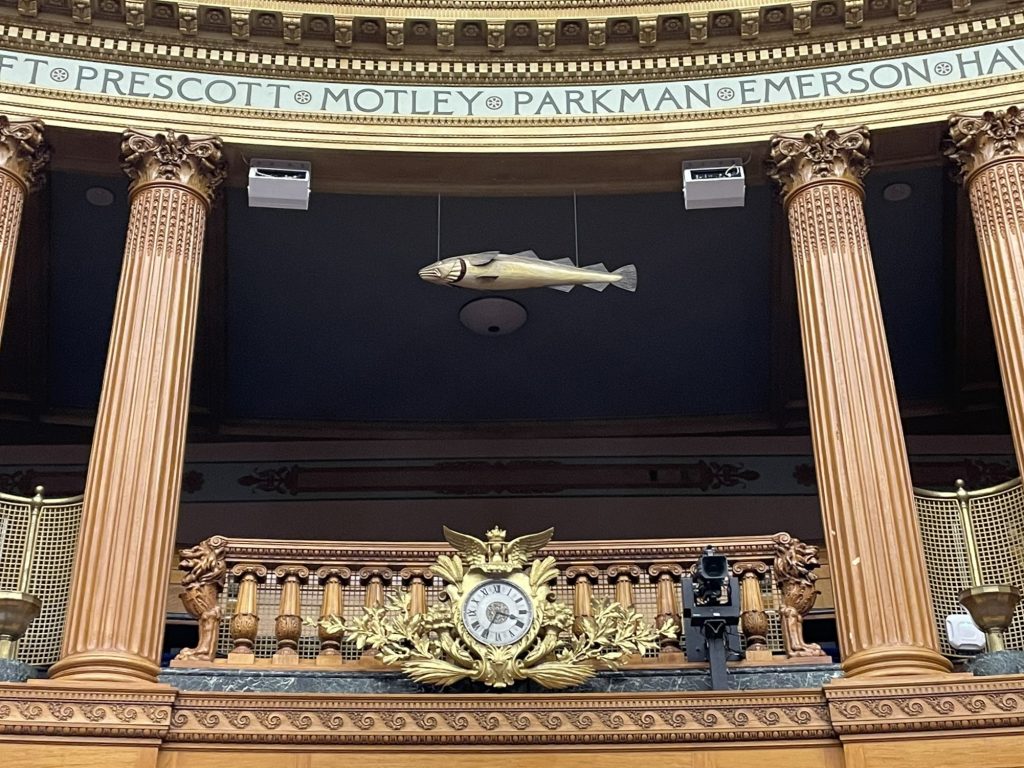
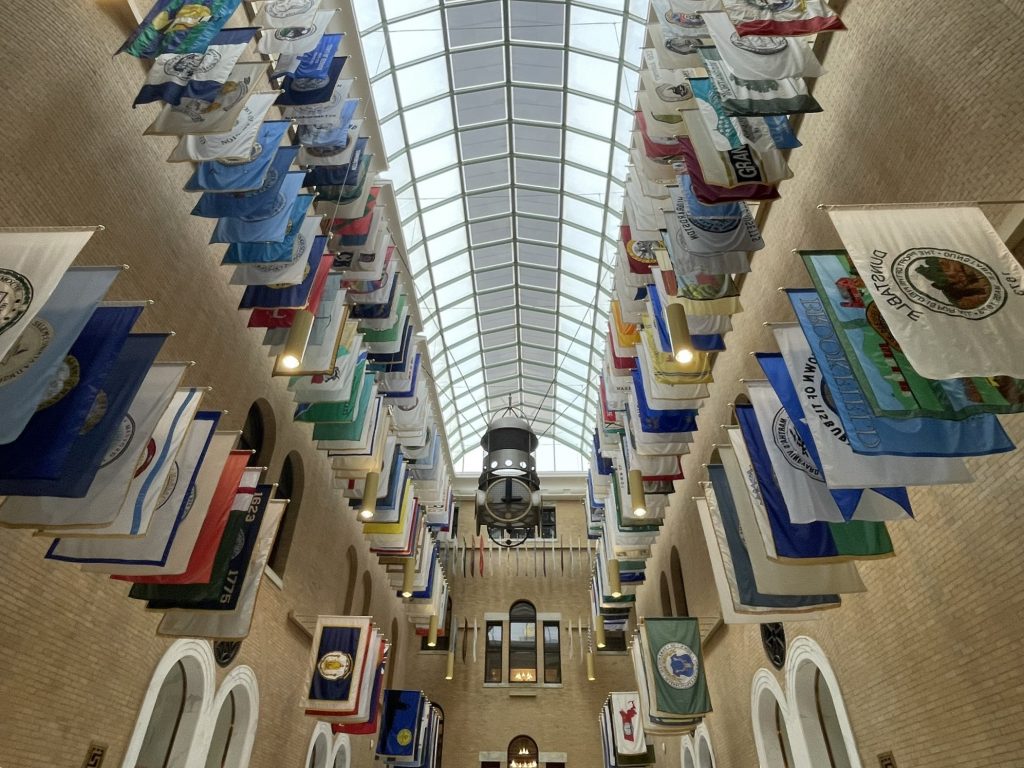
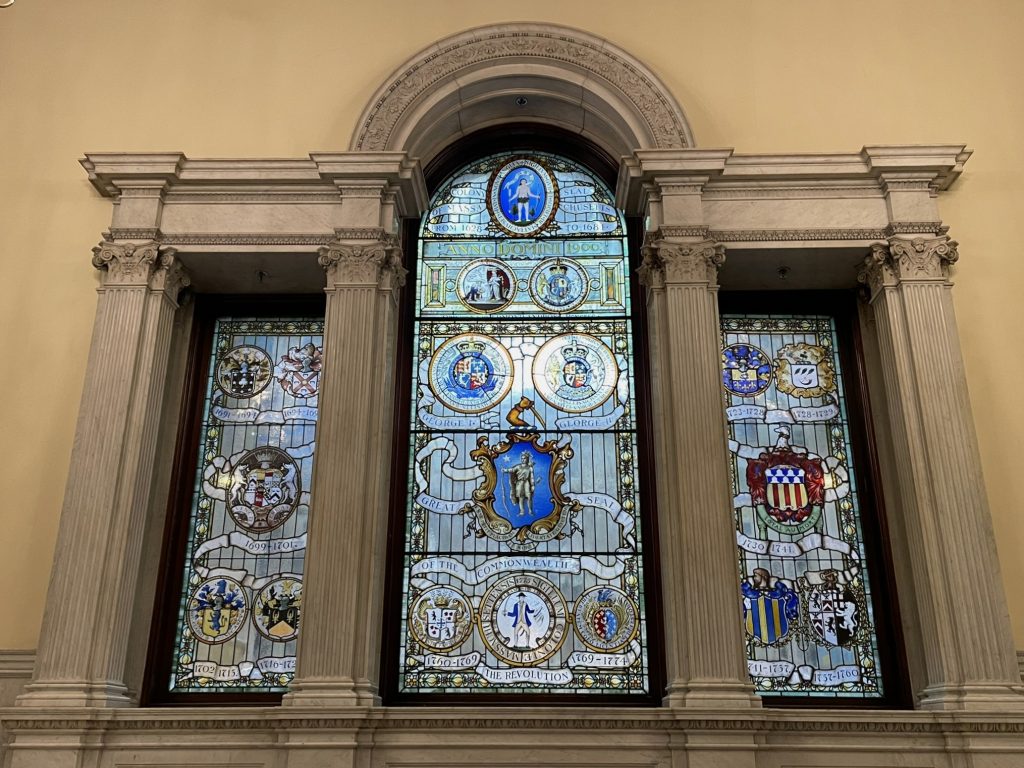





One thought on “Massachusetts State House”